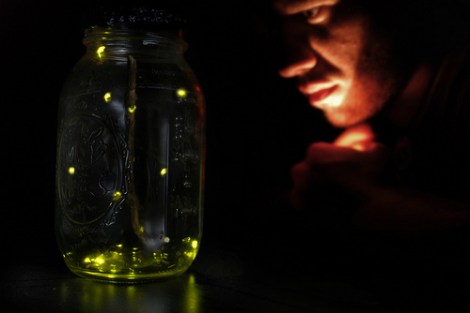LEDs are already much, much more efficient than any other light bulb out there, but a group of scientists figured out how to make them a whopping 55 percent more efficient — by looking at fireflies.
Of course, they didn’t go out in a field, catch a bunch of fireflies, put them in a jar, and call it a light bulb. (Seems romantic, but really, you just end up sitting in the dark.) Like scientists are wont to do, they instead stuck the fireflies under a microscope, and took a look at the microscopic membranes on the bugs’ bellies. What they found was “a pattern of sharp, jagged scales on the fireflies’ bodies enhanced the amount of light emitted by the fireflies’ lanterns,” writes Yale e360.
Turns out, fireflies and LEDs have to overcome a similar problem: The membrane surrounding a light source can cause a substantial proportion of the light to reflect back inwards. Which isn’t much use to fireflies seeking out brightly blinking mates or people trying to read by LED light. The patterns that scientists saw on the firefly membranes overcome this problem naturally.
So, the scientists used that pattern to create a similar skin for LEDs. It doesn’t even involve creating new LEDs — add a few more steps to the production process, and you’ve got that much more light. Bonus: Rebranding LEDs as “firefly bulbs” will attract a whole new market of 8-year-olds, nostalgic, displaced East Coasters, and Joss Whedon fans.




